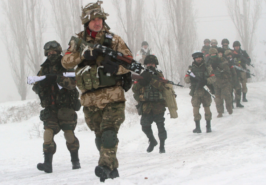Posted on 02 Jun 2025
More than 90% of firearms in Türkiye are unlicensed. In Greece, over half of all weapons are unregistered. And in Bulgaria, Turkish-manufactured gas guns transit legally before being converted into lethal weapons in EU countries. These figures illustrate the scale and complexity of Europe’s southeastern firearms trade—an ecosystem shaped not just by war in Ukraine, but also by cultural attitudes to guns, gaps in national policy, and deeply embedded transnational trafficking networks.
This report investigates how arms trafficking functions within and across these countries, each with its own ecosystem shaped by history, geography, conflict and criminal trends. As the war in Ukraine continues, concerns are mounting over potential arms spillovers. Yet this report underscores that illegal weapons flows in the region extend far beyond Ukraine, with roots in local cultures, politics and longstanding trafficking networks.
Türkiye emerges as a major source and transit hub for illicit weapons. With an estimated 36 million unlicensed firearms—90% of total civilian arms in the country—the scale is staggering. The report highlights how blank-firing pistols produced legally in Türkiye are trafficked via Bulgaria into the EU, where they are converted into lethal weapons. Transnational networks, terrorist groups and domestic criminals all contribute to Türkiye’s complex firearms market.
Greece is primarily a transit country but also has strong domestic demand, especially in urban centres like Athens and Thessaloniki. With around 57% of firearms unregistered, illegal guns are often used in crimes involving both local and foreign criminal groups. The rise of 3D-printed weapons and youth involvement in gun crime are highlighted as growing threats.
Bulgaria, by contrast, is a regional outlier. While it has a significant arms production industry, domestic demand for illicit weapons is limited. Historically shaped by communist-era surveillance and post-Soviet export scandals, Bulgaria today plays a critical transit role—particularly for Turkish gas guns headed to Europe. However, recent increases in legal arms exports due to the war in Ukraine could present future challenges.
The report also maps key trafficking routes, price variations in the black market, and the limited presence of national strategies addressing illicit firearms in the region. It concludes with concrete policy recommendations to strengthen national and regional responses, including the regulation of 3D-printed firearms and deeper cross-border cooperation.
‘Neighbours of conflict’ complements GI-TOC’s previous publications ‘Smoke on the Horizon’ and ‘Tomorrow’s fire’, offering a holistic understanding of the evolving illicit arms market in Europe and its neighbourhood.




